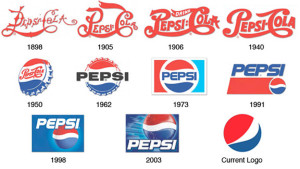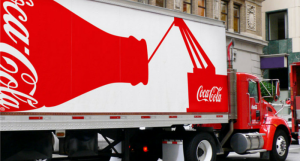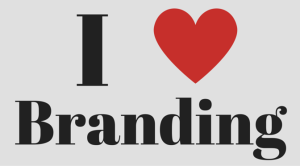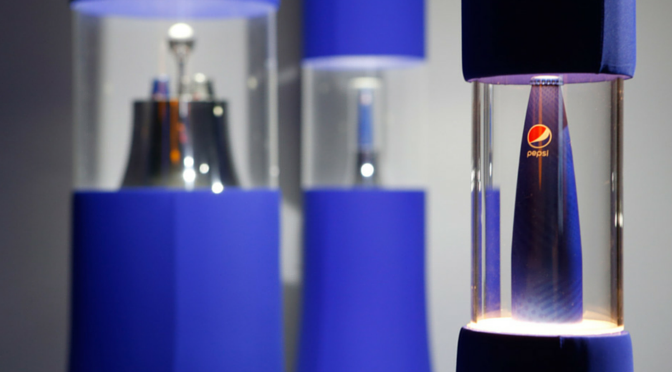How to Make Your Brand Stand Out in a Crowd
On a hot Monday afternoon, July 4th, 2016, competitors will gather at the boardwalk on Coney Island in Brooklyn, N.Y. to compete in one of the most famous Indepedence Day traditions around – the Nathan’s Hot Dog Eating Contest. Now, despite what some may think of the contest itself, there is little doubt the impact it has had on the Nathan’s Famous Hot Dog brand.
This was a brand that was previously only known to a select few in the northeast, but is now known around the world. And much of the thanks for that comes from those who showed up every  Fourth of July in front of the brand’s Coney Island location to see how many hot dogs they could eat in ten minutes.
Fourth of July in front of the brand’s Coney Island location to see how many hot dogs they could eat in ten minutes.
That’s right – a brand was able to build an entire branding strategy off of a competitive eating contest.
How did they do it? This situation is a classic example of a brand seeing an unmet need and filling the space.
There normally isn’t a lot going on in terms of televised entertainment on this day of the year, and the company had been holding hot dog eating competitions for many years. With the foresight to see the potential behind filling the entertainment void, Nathan’s then was able to connect their brand with the holiday in general. As the competition’s popularity grew, so did the brand recognition and brand equity.
For brands looking to stand out in a crowded marketplace, looking for ways to reach outside of just your product can be the most effective way to differentiate from your competitors. Nathan’s was sitting in the packed hot dog-selling industry, with little brand separation, especially when competing against the bigger brands in its space.
 They didn’t look to try and create a fancy new logo or change their brand values – instead, they used the local strength of their brand and a timely piece of entertainment connected with their product to gradually build up.
They didn’t look to try and create a fancy new logo or change their brand values – instead, they used the local strength of their brand and a timely piece of entertainment connected with their product to gradually build up.
An important point to keep in mind, however, is that a quality product behind the brand is a vital piece of the puzzle. There is little doubt that if Nathan’s sold an inferior hot dog that didn’t stand up to the reputation of the brand, then its growth and reputation would be limited.
Let’s assume you are offering a high-quality product in a crowded space where your brand is struggling to stand out. You may not have something unique as the hot dog eating contest to help grow your brand, but your brand is so much more than its tangible assets.
Maybe your customer satisfaction is astoundingly good? Maybe you have a strong connection to a season, place or feeling? Or possibly your brand is synonymous with a particular event, much like the Nathan’s example.
All of these are ways to spread your brand beyond the traditional brand limits, and find new audiences who simply needed to be made aware of your brand and what it stands for.
Image Sources:
Image 1
Image 2
Learn more about building your best brand by downloading this FREE webinar, "Identifying The Opportunities In Your Brand Portfolio - Are You Capitalizing On Every Potential Business Opportunity Your Portfolio Provides?"
Evolution, with a Purpose: How the Top Brands Stay Relevant in an Ever-Changing Market
In a recent piece for The Huffington Post Australia, author Luke Cooper asked the question, “Why would a soft drink company require a chief design officer?” The answer lies in how brands present themselves to their consumers.
As the wishes of consumers shift, brands must also shift how their strategies are developed and how they represent themselves. This trend goes beyond brand strategy; in fact, it leans heavily on visual branding to communicate the brand story.
“Design isn't about the shape of a product, but the way of thinking of the company," Mauro Porcini, Pepsi’s new Chief Design Officer, points out.
Porcini’s appointment to his role at Pepsi is the latest move by a global brand acknowledging that their brand’s success is no longer a byproduct of tangible brand elements like logo, product  quality and packaging. Rather, brands are moving into the business of emotion and connection with their consumers, utilizing branding to insert themselves in new aspects of their lives.
quality and packaging. Rather, brands are moving into the business of emotion and connection with their consumers, utilizing branding to insert themselves in new aspects of their lives.
The new wave of product design is heavily influenced by technology and the consumer’s want for brands to make their lives easier and more interesting. Pepsi’s new bottle designs, which took four years to complete, merges the iconic Pepsi branding with space-age bottle shapes and materials, all intended to create the emotional connection that Pepsi is a brand of the future.
It’s quite a risk for these long-lasting brands, which have spent decades building up their brand equity through familiarity and consistency, to essentially rebrand their visual branding elements in the name of the next big thing. But they see, and have seen for a while, that today’s consumer base is skewing younger and showing strong signs of favoring brands with more flash and modern looks.
With this change in brand strategy comes a word that has been the driving force behind many of the rebrands, brand refreshes, updates and strategy shifts throughout the years – relevance. Brands are consistently fighting to stay relevant with their target audience, and the recent tech-influenced design choices are perfect examples.
There is a fine line, however, when looking to stay relevant. Yes, there are some brands who can easily and seamlessly evolve and change their branding, keeping their brand equity in tact while staying top-of-mind with consumers. However, this is a rarity in the branding world, and a characteristic that does not come easy.
For the rest of the brands, a pair of strategies are available as possible solutions.
The first starts at the beginning of the branding process with a strategy that at first seems counter-intuitive – in order to avoid the need to constantly shift to keep up with the latest trends, develop a brand that ignores the need to feel “trendy.” In other words, if you start out with a brand strategy that is rooted in strong and well-established branding principles, then when the current trend goes out of fashion, your brand won’t go with it.
The second strategy takes a page from the book of those timeless brands who seem to stay relevant no matter what the trends. Their secret weapon is an unwavering commitment to what has made their brand strong. Whether it’s a logo, a name, a color or even just a consistently quality product, they have identified the constant among the change and used that as the calling card for their brand evolutions.
With the shift in brand presentations that have led to the hiring of a chief designer at a soda company, brands are looking more toward creating an image outside of their product – one that will stay with their consumer long after the interaction has ended, or one that will draw them in to begin with. But as has been seen throughout the history of failed rebrands, change for change sake is a recipe for disaster – brand strategy and strong visual brand guidance are crucial for keeping up with the latest and greatest.
Learn more about building your best brand by downloading this FREE webinar, "Identifying The Opportunities In Your Brand Portfolio - Are You Capitalizing On Every Potential Business Opportunity Your Portfolio Provides?"
AW Spotlight: Meet the 2016 Addison Whitney Summer Interns!
Every summer, Addison Whitney welcomes an outstanding group of college students into the office as our summer interns! This year, our class consists of four interns representing three schools from around the area – these four will be working in the marketing, brand strategy, market research and verbal branding departments, and we are excited to have them on board this summer!
Now, let’s learn a little more about the AW summer 2016 intern class!
Department: Marketing
School: UNC Chapel Hill
What is your favorite brand? My favorite brand is Lululemon because it offers high quality products that empower its customers (and it makes me feel like I am better at working out than I actually am).
What is one thing you hope to learn this summer at AW? I hope to learn the keys to setting up a successful Google Adwords campaign, and how to analyze the information gathered from the campaign to reach more people efficiently.
Department: Brand Strategy
School: University of North Carolina at Charlotte
What is your favorite brand? Taco Bell – Taco Bell is a brand that knows how and where to reach its target audience. The brand is successful on basically every relevant social media platform and was one of the first brands to successfully utilize SnapChat. More importantly, Taco Bell understands its brand identity and lives by it unapologetically.
What is one thing you hope to learn this summer at AW? I hope to learn the processes behind developing relevant and functional brand strategy. Whether it be a brand positioning project or a complex brand architecture project, I am looking forward to learning what it takes to create a successful brand.
Department: Market Research
School: Wake Forest University
What is your favorite brand? Hershey’s – because I have the biggest sweet tooth of all time and I can’t get through the day without having a piece of chocolate.
What is one thing you hope to learn this summer at AW? I’m hoping to learn the behind-the-scenes action of branding. I don’t think a lot of people realize or know what all goes into the process of making a brand. I’ve already learned so much in my first week and am looking forward to learning more.
Department: Verbal Branding
School: Wake Forest University
What is your favorite brand? My favorite brand is Amazon. One man's idea of how to take advantage of internet turned into a fast-growing brand that now, two decades later, is a common household brand.
What is one thing you hope to learn this summer at AW? I really hope to improve my understanding of brands and the overall branding process.
Addison Whitney is a global branding firm with a passion for building strong brands. To learn more about Addison Whitney, visit our website at AddisonWhitney.com, or contact us here.
3 Things to Consider when Taking Your Brand Name Global
Most organizations are looking for their brand to grow throughout its lifetime, and for some, that anticipated (and hoped for) growth includes expanding outside of their home region or country. However, this growth can come with a downside for the brand if certain aspects, specifically the brand name, aren’t suited to travel. Everything is going well – the brand is growing, new markets are identified, the stage is set for an initial foray into the global market – until the brand name falls flat once it leaves the home market.
So how does a brand ensure its success both locally and globally? Here are three areas of consideration to take into account when creating a brand name that will be used on a global scale:
- Legal: Make sure your brand is legally able to extend outside of your current market and that you won’t run into legal opposition using your brand name in another region or country. For instance, a local business could use parts of the brand name of a larger company, which wouldn’t cause too many problems until they tried to go national or global. Then they would almost certainly face opposition from the larger organization, which would result in time and costs spent in working out any issues that arise. Additionally, there could be parts of a brand name that pose no legal issues in the originating country, but when expanding to other nations face differing laws.
- Linguistics: Be conscious of how the brand name translates in other languages. More times that most would think, one or more words in a brand name translate very poorly into the language of a potential new market – everything from profanities to translations that don’t bode well for the business or product involved.Don’t wait until you see the negative reaction or end up on a “worst name mistakes” list to properly do the research necessary to avoid this problem. Also, keep in mind that knowing exactly where a brand might grow is rare – in this case, it’s definitely better to be safe than sorry and research the linguistic aspect of a potential brand name in as many languages as possible.
- Growth/Expandability: Once you expand, consider the impact on the business. Ideally the business will grow and you need to make sure the brand name isn’t so limiting that it impedes this progress.
Just like any aspect of a brand, a name carries valuable weight with an audience. Often, it is the first interaction they have with the overall brand, so as the brand grows, so does the potential audience. This also increases the importance of a high-quality brand name – one that will have the same impact whether it is known to 100 people or 100 million.
Creating a global-friendly brand name shouldn’t come as an afterthought or be consigned to a reactive strategy. When developing a brand name, work under the assumption that there exists a real possibility that it will be utilized on a global scale. That way, you can avoid hoping your established brand will have success when it expands beyond its current borders and find a new, global audience.
Learn more about building your best brand by downloading this FREE webinar, "Identifying The Opportunities In Your Brand Portfolio - Are You Capitalizing On Every Potential Business Opportunity Your Portfolio Provides?"
Living the Brand: How to Build a Strong Brand Persona
Why do we gravitate towards certain brands while actively avoiding others? What is causing the rise in “lifestyle” branding? When does a brand become something more than just a brand?
The answers to these questions could be the basis for an entire blog series, but for this one, we are going to focus on the common theme that runs throughout all of the answers: creating a brand that connects with your audience.
This strategy fits mainly with corporate and organizational branding, with less of an impact toward individual product branding. While those brands can and should still work toward emotional connectivity, the organization and corporate brand presents a more overarching opportunity to become more than just a brand to its audience.
When creating these types of brands, take stock of which characteristics rise to the top with the least amount of effort. A brand persona should come naturally, as it represents a brand’s very core of characteristics, ones that will easily be identified as being constructed and unnatural to the overall branding strategy. For smaller organizations especially, creating a brand that mirrors your personality and can become an extension of yourself can help drive it forward much more effortlessly.
It is in our nature to connect and prioritize those things we relate to, and those things we enjoy. Brands are the same way. It’s why emotional connectivity is so important for brands – their consumers will instinctively be drawn to their brand if there exists an emotional or personal connection.
From a brand perspective, it’s difficult to take steps toward connecting with the audience and presenting a brand that holds certain characteristics if it doesn’t resonate with who you are. To touch on the lifestyle brand topic, the most successful examples are those with founders/owners/executives to live the brand – for instance, if the brand persona is one of laid back, relaxed, eternal vacation living but their founder comes across as buttoned-up, consistently high-strung and stressed out, then the brand will lose emotional authenticity with its audience.
Additionally, your employees are the most prominent proponents of the brand – each day, to effectively advance the brand, they must live the persona and buy into what the brand represents. Again, an inauthentic brand character will have a negative impact that could be difficult to overcome.
So if you’re looking to create a brand that has strong emotional connectivity ability and ties in with your personality, find out what makes you, you. Likes, dislikes, lifestyle, goals, aspirations – all of these are important pieces to help determine your brand. Successfully accomplish this area of brand development, and living the brand will be as easy as living your life.
Learn more about building your best brand by downloading this FREE webinar, "Identifying The Opportunities In Your Brand Portfolio - Are You Capitalizing On Every Potential Business Opportunity Your Portfolio Provides?"
AW in Review - Addison Whitney Brand Salsa Recap 5.13.16
Welcome to our initial May edition of the AW in Review, our roundup of our latest brand salsa and Addison Whitney news and posts!
Don’t forget, you can stay up-to-date with everything from Addison Whitney by joining the conversation with us on our social media channels – Twitter, Facebook, LinkedIn and Google+.
Stick With What You Know: How To Achieve A Successful Brand Extension
When looking to expand a brand’s influence by introducing new products in different product categories, brand extensions can be a risky move.
It’s been said before on this very blog that when it comes to brand decisions, there’s no need to recreate the wheel. Sometimes, the brand extension that makes the most sense, or the one that comes to mind first, is there for a reason – it’s the best choice. Read More...
5 Ways To Begin Your Branding Before You Begin Your Branding
Sometimes, the work done prior to the project is just as important as the work done during. This same idea is in play during the branding process.
Jumping right into a new brand development or a rebrand is akin to jumping in a pool before finding out how deep it is. Those brands who begin their branding journey by following these five steps ensure they’re starting off on the right foot. Read More...
Looking Toward The Branding Future With An Eye On The Past
It’s a common misconception that a “rebrand” automatically means a brand new start – that when a rebrand occurs, the slate must be wiped clean and all subsequent branding elements must possess totally original characteristics.
In fact, the best rebrands take the opposite approach. They take the time beforehand to identify and research what brand aspects of the previous iteration carry the most weight and provide the most benefit, then find ways to incorporate or pay homage to these aspects in the new brand. Read More...
Stick With What You Know: How to Achieve a Successful Brand Extension
Stick with what you know – it’s a simple piece of advice and one that serves as the guiding force behind making an initial run with brand extension decisions. When looking to expand a brand’s influence by introducing new products in different product categories, brand extensions can be a risky move, destined to either spread the master brand to new frontiers, or bound to crash and burn, potentially harming the master brand in the process.
It’s been said before on this very blog that when it comes to brand decisions, there’s no need to recreate the wheel. Sometimes, the brand extension that makes the most sense, or the one that comes to mind first, is there for a reason – it’s the best choice. This is especially true for first-time forays into brand extensions. The issues begin when brands try to outthink themselves, reaching for products that were at the end of the brainstorming list, just to try and tap into a market in which the master brand would never be considered.
Find a product line that provides your audience with an easily traceable link to the master brand. Not only will this increase the residual brand equity for the new product, but it will also ease any apprehension when the two are inevitably linked. For instance, if your brand is known for cleaning products, then the new extensions should fall within the “cleaning” realm, no matter how indirectly that may be. This will avoid any unsavory connotations, such as attempting to sell a potato chip that people will instinctively think has cleaner in it.
The direct line advice is applied mainly when the extension is directly leveraging the master brand. While there are some extensions that step outside of the master brand’s key space, their branding efforts are set forth to establish them as individual and unique brand offerings, where the master brand is not utilized or mentioned.
Another advantage to sticking to what your brand is known for is the sense of expertise that will be felt within the audience for the extension product. If consumers already feel your brand stands out within its space, finding a product that can be closely associated with that space will further expand that feeling that if your brand can excel at one thing, then creating an industry-related product is highly believable.
As previously mentioned, these new products are bound to carry the weight of the master brand. This impact goes both ways, as well. Determine whether the success or failure of the extension could have a negative effect on the master brand. If the extension takes off and it ends up coming back to harm the master brand, than the potential harm may not outweigh the benefit of a successful product launch.
When a brand extension is on the table, it is time to look at the master brand’s strategic plan. A good brand strategy when working with multiple brands under one roof should have a well-designed, easily understood brand portfolio, where each individual brand has a logical place, while also saving room for brand extensions and expansion. Trouble can arise when an extension is introduced that does not fit properly within the portfolio. Not only can that signal that an extension is outside of the proper reach and area of expertise for a master brand, but it can also disrupt the overall brand strategy.
Still unsure whether a brand extension is the right move for your brand? Learn more by downloading this FREE webinar, "Identifying The Opportunities In Your Brand Portfolio - Are You Capitalizing On Every Potential Business Opportunity Your Portfolio Provides?"
5 Ways to Begin Your Branding Before You Begin Your Branding
As with most elements of business, preparation is a key factor to finding success. Sometimes, the work done prior to the project is just as important as the work done during. This same idea is in play during the branding process. Jumping right into a new brand development or a rebrand is akin to jumping in a pool before finding out how deep it is. Those brands who begin their branding journey by following these five steps ensure they’re starting off on the right foot.
- Take a Look Around – Who are You Talking to?
Have you ever tried to talk to a group of people who aren’t listening? It’s an exercise in futility and a waste of time. This goes for brands that don’t identify their target audiences early in the branding process. They’re stuck shouting at the masses, hoping a few will actually hear the message. Before you can start determining your messaging, you first must decide who will be most apt to listen and associate with your brand and what your brand has to say.
- Don’t Leave it All Behind.
This is especially important for those planning to begin a rebrand. As mentioned previously on this blog, just because a brand is looking to refresh doesn’t mean that everything from its past must be wiped clean. Determine what brand characteristics and aspects still hold a piece of brand equity – whether it be your name, a logo element or simply a color scheme – and keep them in mind as the new brand takes shape. They are a built-in head start in the brand equity building process, and shouldn’t be wasted.
- Find Your Sweet Spot.
“Trying to be everything to everyone means you’ll be nothing to no one.” Much like identifying a target audience, proper pre-branding branding work includes researching what makes your brand stand out, and in which space you will best thrive. Brand specialties can vary greatly, but the ones who have the most success learn what differentiates them from the competition, and make that the focal point of branding efforts. Putting your best foot forward is a valuable resource in the path to success.
- Determine Your Destination.
At this point, there is a solid foundation of information in place and the branding process is about to really begin. However, there is one more question that still needs to be answered: where does the brand want to go? Branding without a final “destination” in mind is a sure path toward failure. The end result is what will help drive the strategies and actions surrounding the branding process, and allow them to all have a single endpoint to move toward.
- A Journey of a Million Miles Begins with a Single Step.
There’s a lot that goes into branding, and it can be a bit overwhelming. But after following these steps and going into the process armed with the information and strategic knowledge to ensure an efficient and effective brand build, the next step is the easiest – it’s time to start. Don’t get caught up in everything that stands between the beginning and the finish. Instead take each step with care and attention to the details that will arise.
Looking toward the Branding Future with an Eye on the Past
It’s a common misconception that a “rebrand” automatically means a brand new start – that when a rebrand occurs, the slate must be wiped clean and all subsequent branding elements must possess totally original characteristics.
In fact, the best rebrands take the opposite approach. They take the time beforehand to identify and research what brand aspects of the previous iteration carry the most weight and provide the most benefit, then find ways to incorporate or pay homage to these aspects in the new brand.
A recent example of this is the brand update from the Sacramento Kings of the NBA. As they were preparing to move to a new arena, they felt a need to update their brand, specifically their logo.
Throughout the redesign process, they looked at countless visual branding representations of the team name, many of which had little to no connection to the previous visual portfolio. However, what they kept coming back to was a design that touched on previous logos from the franchise’s long and storied past.
Ultimately, they chose a design that was a more modern version of the historical look, which immediately allowed fans, players, alumni, employees and the overall audience to connect the team’s future with its past, providing the new logo with instant brand equity.
This idea of building equity in a brand, especially within a specific element, is a difficult concept to strategize. Often it takes years to build up enough recognition, goodwill, historical weight, etc. to
sufficiently say that the brand carries its own weight with an audience. Therein likes one of the benefits of tapping into a brand’s history while strategizing its future. In this instance, those who connected with the team back when they were the Kansas City Kings or even when they were in Cincinnati, Ohio and known as the Cincinnati Royals could reconnect with the franchise through a familiar visual branding choice.
Or, as Alex Kramers of Kings.com says, “The powerful, all-encompassing symbol invoked a deep sense of nostalgia while reinvigorating a heritage that had long distinguished the historic franchise.”
This quote can resonate with brands across the spectrum as a reminder that rebranding and reinvigorating don’t have to be mutually exclusive. There’s a reason why the positive aspects of the past are so often imagined fondly, and why nostalgia is such a powerful emotional response, one that brands should be jumping at the opportunity to include.
Rebranding with an eye toward the past doesn’t have to stop at a redesigned logo. Every aspect of the brand is subject to holding nostalgic brand equity, and as such, should be included in the research process used to determine the best of the best of the old brand. It could be something as simple as a color choice that connects the branding eras, or it could go all the way up to the verbal branding and brand name that drives the association.
From start to finish, the big decisions to the smallest details, the top of the organization all the way down, a rebrand can be an overwhelming and challenging task. Why add more to the effort by starting from scratch? Use what your brand already possesses and give the new brand a ready-to-go foundation on which to build.
AW in Review - Addison Whitney Brand Salsa Recap 4.28.16
Welcome to one final April edition of the AW in Review, our roundup of our latest brand salsa and Addison Whitney news and posts!
Don’t forget, you can stay up-to-date with everything from Addison Whitney by joining the conversation with us on our social media channels – Twitter, Facebook, LinkedIn and Google+.
Don’t Reinvent The Branding Wheel
Innovative. Transcendent. Groundbreaking.
Many brands would love to be associated with these characteristics, or at least have the words used as descriptions of their brands. But for some, this may not necessarily be a good thing.
As discussed in a recent study from York University in Toronto, finding the right balance of when and how much to update the brand is crucial to brands, especially those who are seen as “sincere” and whose brand perception does not include a propensity for change. Read More...
The Science Of Logo Design: How Much Can A Logo Impact A Brand?
While certain luxury or niche brands may embrace the concept of exclusivity, where does that leave companies and organizations that pride themselves on being open, helpful and friendly?
The idea of forgoing a logo isn’t realistic, particularly when standing out in a crowded marketplace is a basic requirement for success.
Is it possible to convey both competence and warmth in a logo? Unity and inclusion? Strength and kindness? Read More...
Why We Love Branding (And You Should, Too!)
At Addison Whitney, we’ve always identified with the term “brand fanatics” when it comes to our people.
This makes sense – it’s what we do. We have a passion for creating and building strong brands, and when we’re not doing that, we love to analyze, brainstorm and gather new information about branding.
But why does branding hold a place among our favorites? We asked a few brand fanatics this very question: Why do you love branding? Read More...
Addison Whitney's quarterly newsletter, Forward, is bursting with branding news and insights - and we love to share what we know! Sign up here.









